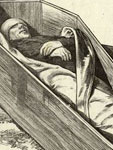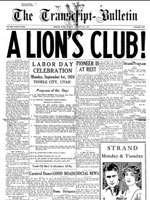These 1,275 detailed historical maps depict cities in the state of Utah. D. A. Sanborn Company, a pioneer producer of insurance maps on a national scale, designed maps that depicted commercial, industrial, and residential sections of Utah cities. The collection of large-scale detailed maps dating from 1867 through 1969 is an ongoing project, and currently contains maps of 40 cities. Users may download compressed images to view and enhance the maps. Maps are arranged alphabetically by city and date, although the years available for each city are inconsistent.
The maps outline the site, size, shape, construction, and building materials of dwellings, commercial buildings, and factories. In addition, the maps detail building use, sidewalks, property boundaries, house and block numbers, and even the locations of hydrants and wells. The collection presents an opportunity to study Utah history, architectural history, and the development of cartography.


